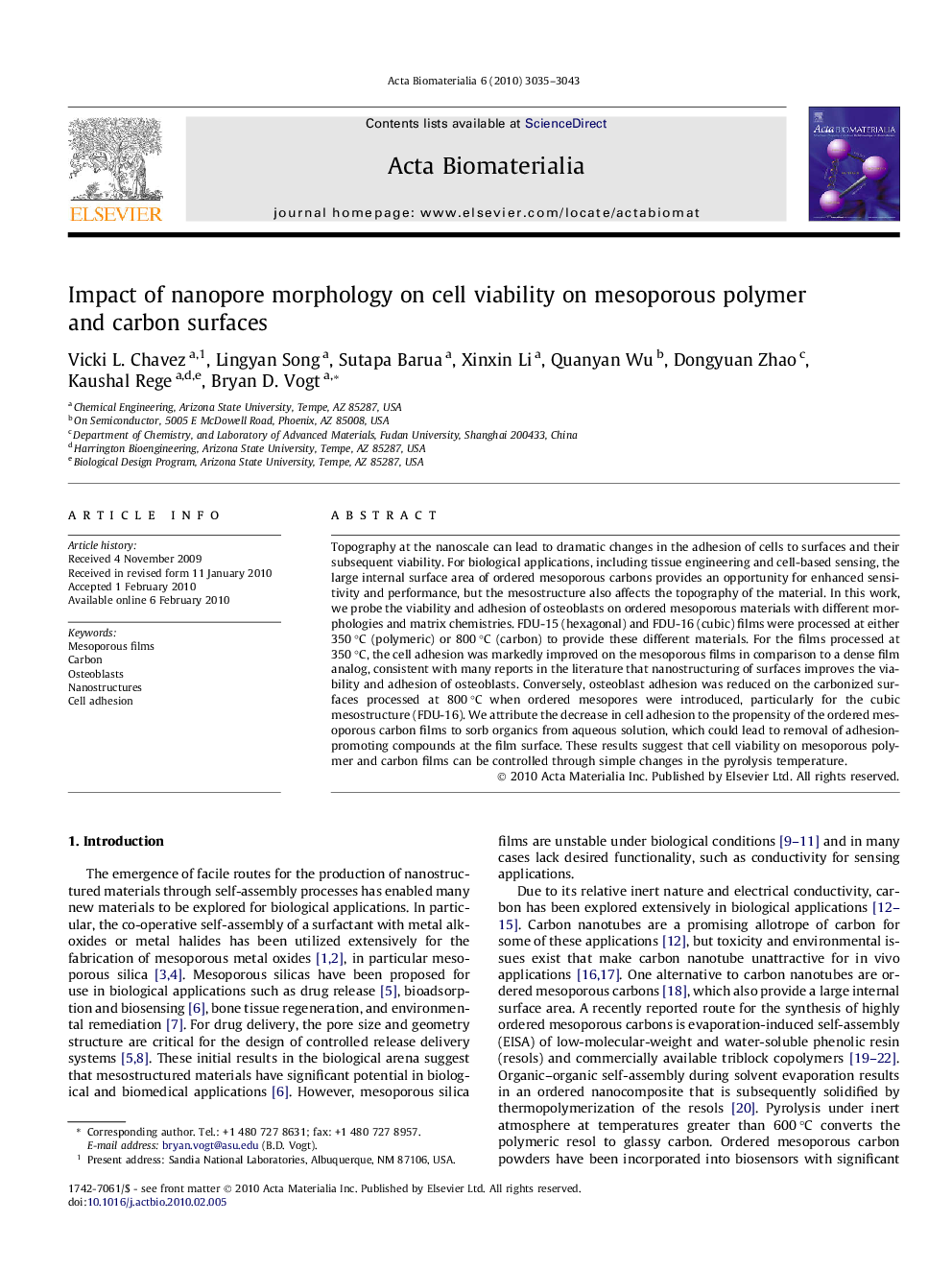| Article ID | Journal | Published Year | Pages | File Type |
|---|---|---|---|---|
| 2266 | Acta Biomaterialia | 2010 | 9 Pages |
Topography at the nanoscale can lead to dramatic changes in the adhesion of cells to surfaces and their subsequent viability. For biological applications, including tissue engineering and cell-based sensing, the large internal surface area of ordered mesoporous carbons provides an opportunity for enhanced sensitivity and performance, but the mesostructure also affects the topography of the material. In this work, we probe the viability and adhesion of osteoblasts on ordered mesoporous materials with different morphologies and matrix chemistries. FDU-15 (hexagonal) and FDU-16 (cubic) films were processed at either 350 °C (polymeric) or 800 °C (carbon) to provide these different materials. For the films processed at 350 °C, the cell adhesion was markedly improved on the mesoporous films in comparison to a dense film analog, consistent with many reports in the literature that nanostructuring of surfaces improves the viability and adhesion of osteoblasts. Conversely, osteoblast adhesion was reduced on the carbonized surfaces processed at 800 °C when ordered mesopores were introduced, particularly for the cubic mesostructure (FDU-16). We attribute the decrease in cell adhesion to the propensity of the ordered mesoporous carbon films to sorb organics from aqueous solution, which could lead to removal of adhesion-promoting compounds at the film surface. These results suggest that cell viability on mesoporous polymer and carbon films can be controlled through simple changes in the pyrolysis temperature.
